Saif M. Mohammad
Shammie
Words of Warmth: Trust and Sociability Norms for over 26k English Words
Jun 04, 2025Abstract:Social psychologists have shown that Warmth (W) and Competence (C) are the primary dimensions along which we assess other people and groups. These dimensions impact various aspects of our lives from social competence and emotion regulation to success in the work place and how we view the world. More recent work has started to explore how these dimensions develop, why they have developed, and what they constitute. Of particular note, is the finding that warmth has two distinct components: Trust (T) and Sociability (S). In this work, we introduce Words of Warmth, the first large-scale repository of manually derived word--warmth (as well as word--trust and word--sociability) associations for over 26k English words. We show that the associations are highly reliable. We use the lexicons to study the rate at which children acquire WCTS words with age. Finally, we show that the lexicon enables a wide variety of bias and stereotype research through case studies on various target entities. Words of Warmth is freely available at: http://saifmohammad.com/warmth.html
* In Proceedings of ACL 2025 Main
What Media Frames Reveal About Stance: A Dataset and Study about Memes in Climate Change Discourse
May 22, 2025Abstract:Media framing refers to the emphasis on specific aspects of perceived reality to shape how an issue is defined and understood. Its primary purpose is to shape public perceptions often in alignment with the authors' opinions and stances. However, the interaction between stance and media frame remains largely unexplored. In this work, we apply an interdisciplinary approach to conceptualize and computationally explore this interaction with internet memes on climate change. We curate CLIMATEMEMES, the first dataset of climate-change memes annotated with both stance and media frames, inspired by research in communication science. CLIMATEMEMES includes 1,184 memes sourced from 47 subreddits, enabling analysis of frame prominence over time and communities, and sheds light on the framing preferences of different stance holders. We propose two meme understanding tasks: stance detection and media frame detection. We evaluate LLaVA-NeXT and Molmo in various setups, and report the corresponding results on their LLM backbone. Human captions consistently enhance performance. Synthetic captions and human-corrected OCR also help occasionally. Our findings highlight that VLMs perform well on stance, but struggle on frames, where LLMs outperform VLMs. Finally, we analyze VLMs' limitations in handling nuanced frames and stance expressions on climate change internet memes.
The Language of Interoception: Examining Embodiment and Emotion Through a Corpus of Body Part Mentions
May 22, 2025Abstract:This paper is the first investigation of the connection between emotion, embodiment, and everyday language in a large sample of natural language data. We created corpora of body part mentions (BPMs) in online English text (blog posts and tweets). This includes a subset featuring human annotations for the emotions of the person whose body part is mentioned in the text. We show that BPMs are common in personal narratives and tweets (~5% to 10% of posts include BPMs) and that their usage patterns vary markedly by time and %geographic location. Using word-emotion association lexicons and our annotated data, we show that text containing BPMs tends to be more emotionally charged, even when the BPM is not explicitly used to describe a physical reaction to the emotion in the text. Finally, we discover a strong and statistically significant correlation between body-related language and a variety of poorer health outcomes. In sum, we argue that investigating the role of body-part related words in language can open up valuable avenues of future research at the intersection of NLP, the affective sciences, and the study of human wellbeing.
NRC VAD Lexicon v2: Norms for Valence, Arousal, and Dominance for over 55k English Terms
Mar 30, 2025

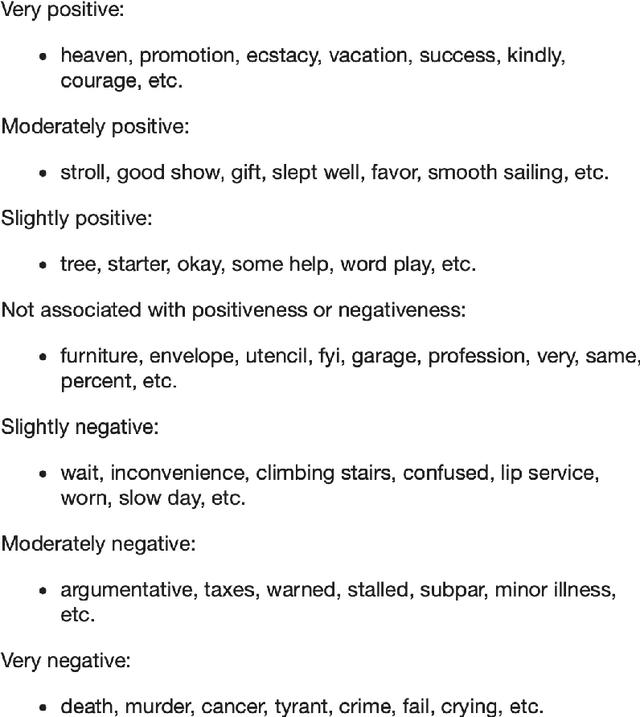
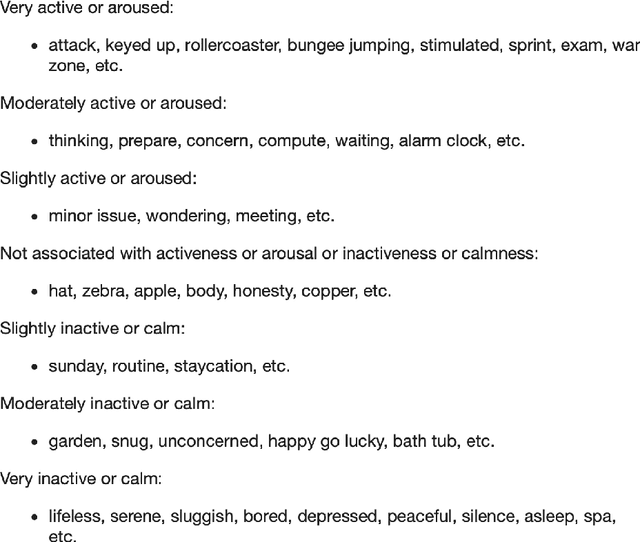
Abstract:Factor analysis studies have shown that the primary dimensions of word meaning are Valence (V), Arousal (A), and Dominance (D) (also referred to in social cognition research as Competence (C)). These dimensions impact various aspects of our lives from social competence and emotion regulation to success in the work place and how we view the world. We present here the NRC VAD Lexicon v2, which has human ratings of valence, arousal, and dominance for more than 55,000 English words and phrases. Notably, it adds entries for $\sim$25k additional words to v1.0. It also now includes for the first time entries for common multi-word phrases (~10k). We show that the associations are highly reliable. The lexicon enables a wide variety of research in psychology, NLP, public health, digital humanities, and social sciences. The NRC VAD Lexicon v2 is made freely available for research through our project webpage.
SemEval-2025 Task 11: Bridging the Gap in Text-Based Emotion Detection
Mar 10, 2025Abstract:We present our shared task on text-based emotion detection, covering more than 30 languages from seven distinct language families. These languages are predominantly low-resource and spoken across various continents. The data instances are multi-labeled into six emotional classes, with additional datasets in 11 languages annotated for emotion intensity. Participants were asked to predict labels in three tracks: (a) emotion labels in monolingual settings, (b) emotion intensity scores, and (c) emotion labels in cross-lingual settings. The task attracted over 700 participants. We received final submissions from more than 200 teams and 93 system description papers. We report baseline results, as well as findings on the best-performing systems, the most common approaches, and the most effective methods across various tracks and languages. The datasets for this task are publicly available.
BRIGHTER: BRIdging the Gap in Human-Annotated Textual Emotion Recognition Datasets for 28 Languages
Feb 17, 2025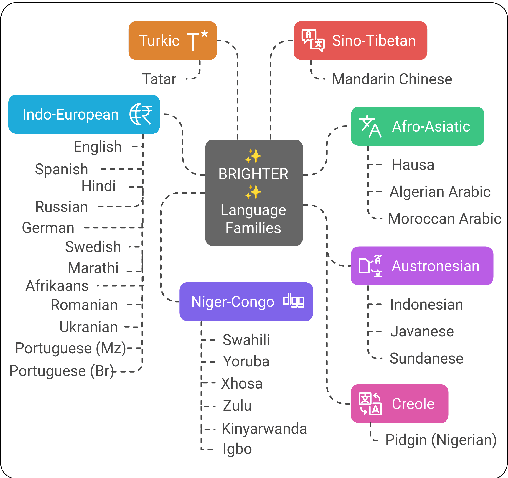
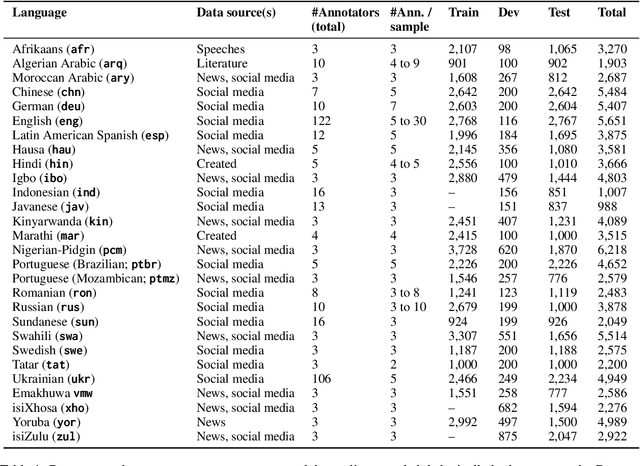
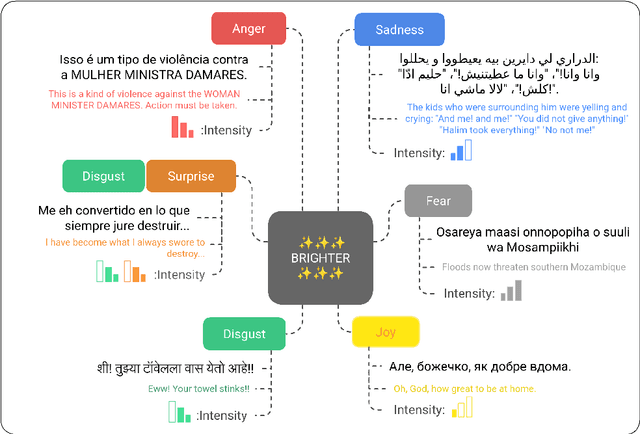
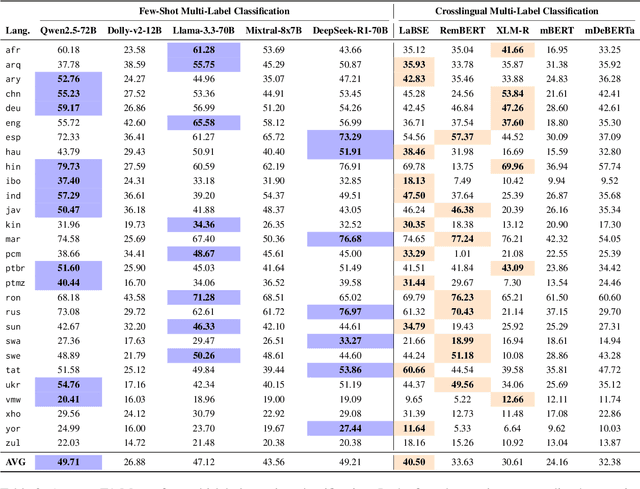
Abstract:People worldwide use language in subtle and complex ways to express emotions. While emotion recognition -- an umbrella term for several NLP tasks -- significantly impacts different applications in NLP and other fields, most work in the area is focused on high-resource languages. Therefore, this has led to major disparities in research and proposed solutions, especially for low-resource languages that suffer from the lack of high-quality datasets. In this paper, we present BRIGHTER-- a collection of multilabeled emotion-annotated datasets in 28 different languages. BRIGHTER covers predominantly low-resource languages from Africa, Asia, Eastern Europe, and Latin America, with instances from various domains annotated by fluent speakers. We describe the data collection and annotation processes and the challenges of building these datasets. Then, we report different experimental results for monolingual and crosslingual multi-label emotion identification, as well as intensity-level emotion recognition. We investigate results with and without using LLMs and analyse the large variability in performance across languages and text domains. We show that BRIGHTER datasets are a step towards bridging the gap in text-based emotion recognition and discuss their impact and utility.
WorryWords: Norms of Anxiety Association for over 44k English Words
Nov 06, 2024



Abstract:Anxiety, the anticipatory unease about a potential negative outcome, is a common and beneficial human emotion. However, there is still much that is not known, such as how anxiety relates to our body and how it manifests in language. This is especially pertinent given the increasing impact of anxiety-related disorders. In this work, we introduce WorryWords, the first large-scale repository of manually derived word--anxiety associations for over 44,450 English words. We show that the anxiety associations are highly reliable. We use WorryWords to study the relationship between anxiety and other emotion constructs, as well as the rate at which children acquire anxiety words with age. Finally, we show that using WorryWords alone, one can accurately track the change of anxiety in streams of text. The lexicon enables a wide variety of anxiety-related research in psychology, NLP, public health, and social sciences. WorryWords (and its translations to over 100 languages) is freely available. http://saifmohammad.com/worrywords.html
Building Better: Avoiding Pitfalls in Developing Language Resources when Data is Scarce
Oct 17, 2024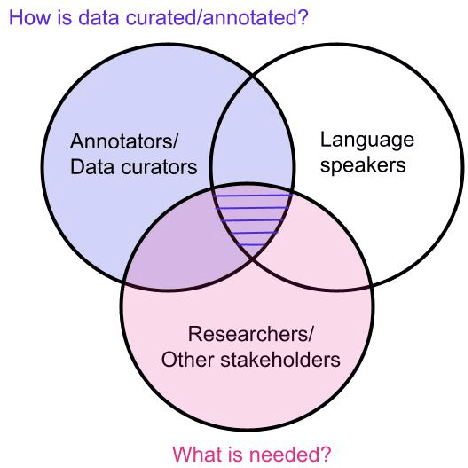

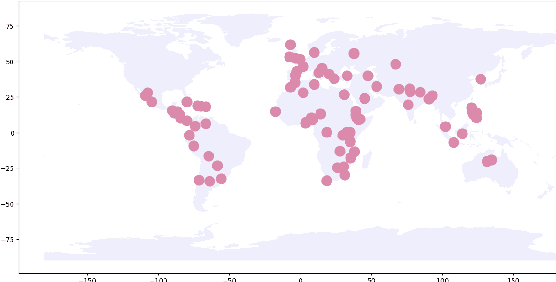
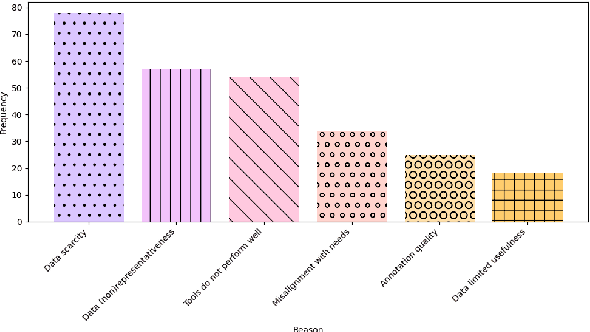
Abstract:Language is a symbolic capital that affects people's lives in many ways (Bourdieu, 1977, 1991). It is a powerful tool that accounts for identities, cultures, traditions, and societies in general. Hence, data in a given language should be viewed as more than a collection of tokens. Good data collection and labeling practices are key to building more human-centered and socially aware technologies. While there has been a rising interest in mid- to low-resource languages within the NLP community, work in this space has to overcome unique challenges such as data scarcity and access to suitable annotators. In this paper, we collect feedback from those directly involved in and impacted by NLP artefacts for mid- to low-resource languages. We conduct a quantitative and qualitative analysis of the responses and highlight the main issues related to (1) data quality such as linguistic and cultural data suitability; and (2) the ethics of common annotation practices such as the misuse of online community services. Based on these findings, we make several recommendations for the creation of high-quality language artefacts that reflect the cultural milieu of its speakers, while simultaneously respecting the dignity and labor of data workers.
The Nature of NLP: Analyzing Contributions in NLP Papers
Sep 29, 2024



Abstract:Natural Language Processing (NLP) is a dynamic, interdisciplinary field that integrates intellectual traditions from computer science, linguistics, social science, and more. Despite its established presence, the definition of what constitutes NLP research remains debated. In this work, we quantitatively investigate what constitutes NLP by examining research papers. For this purpose, we propose a taxonomy and introduce NLPContributions, a dataset of nearly $2k$ research paper abstracts, expertly annotated to identify scientific contributions and classify their types according to this taxonomy. We also propose a novel task to automatically identify these elements, for which we train a strong baseline on our dataset. We present experimental results from this task and apply our model to $\sim$$29k$ NLP research papers to analyze their contributions, aiding in the understanding of the nature of NLP research. Our findings reveal a rising involvement of machine learning in NLP since the early nineties, alongside a declining focus on adding knowledge about language or people; again, in post-2020, there has been a resurgence of focus on language and people. We hope this work will spark discussions on our community norms and inspire efforts to consciously shape the future.
Transforming Scholarly Landscapes: Influence of Large Language Models on Academic Fields beyond Computer Science
Sep 29, 2024



Abstract:Large Language Models (LLMs) have ushered in a transformative era in Natural Language Processing (NLP), reshaping research and extending NLP's influence to other fields of study. However, there is little to no work examining the degree to which LLMs influence other research fields. This work empirically and systematically examines the influence and use of LLMs in fields beyond NLP. We curate $106$ LLMs and analyze $\sim$$148k$ papers citing LLMs to quantify their influence and reveal trends in their usage patterns. Our analysis reveals not only the increasing prevalence of LLMs in non-CS fields but also the disparities in their usage, with some fields utilizing them more frequently than others since 2018, notably Linguistics and Engineering together accounting for $\sim$$45\%$ of LLM citations. Our findings further indicate that most of these fields predominantly employ task-agnostic LLMs, proficient in zero or few-shot learning without requiring further fine-tuning, to address their domain-specific problems. This study sheds light on the cross-disciplinary impact of NLP through LLMs, providing a better understanding of the opportunities and challenges.
 Add to Chrome
Add to Chrome Add to Firefox
Add to Firefox Add to Edge
Add to Edge